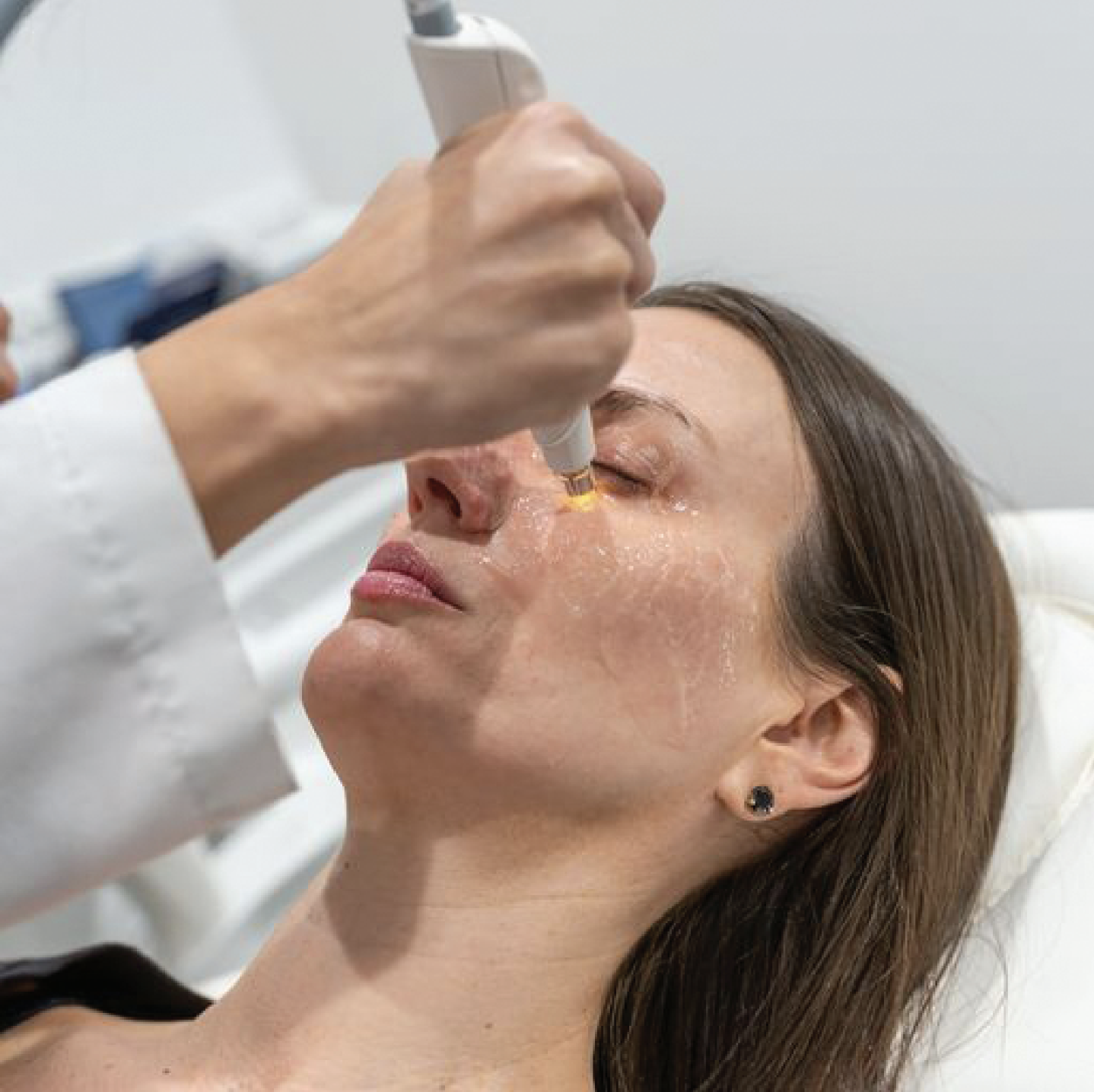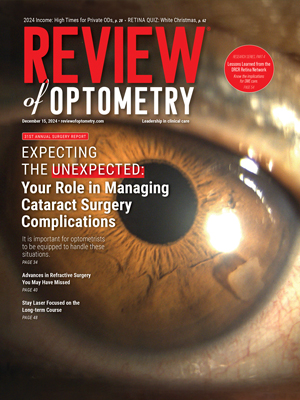 |
| A literature review including 13 studies found that intense pulsed light therapy—ranging from two to four sessions—led to a clinically relevant reduction in dry eye symptoms when compared to placebo (-16 OSDI points). Photo: Hardeep Kataria, OD. Click image to enlarge. |
In 2020, a Cochrane review reported on the effectiveness and safety of intense pulsed light (IPL) therapy for patients with meibomian gland dysfunction (MGD). Given that several new studies have surfaced since that year, a team of researchers recently performed an updated review and published their findings in Acta Ophthalmologica. They found that IPL significantly reduced dry eye symptoms compared to no treatment. Additionally, when the procedure was used as an add-on therapy alongside standard care, patients demonstrated a moderate improvement in symptoms, though researchers caution that the clinical relevance of this effect in real-world practice settings remains unclear.
Data for the meta-analysis was obtained through comprehensive literature searches across Cochrane Library, Embase and Medline databases. Studies were screened for eligibility separately by two authors, who also independently evaluated the risk of bias using tools like GRADE (Grading of Recommendations Assessment, Development and Evaluation) to help assess evidence certainty.
A total of 280 participants were included across the 13 selected studies, all of whom were adults, between ages 28 and 53 and mainly suffering from severe evaporative dry eye due to MGD. The frequency of IPL therapy ranged from two to four sessions among the studies.
The data showed that IPL therapy led to a significant reduction of dry eye symptoms, with an approximate mean difference of -16 OSDI points. When used as an adjunctive therapy, IPL resulted in -7 OSDI points vs. placebo treatment; however, the moderate risk of bias detected among the analyzed studies lowers the certainty of evidence.
“To reduce the risk of selective reporting and publication bias, future studies should have pre-registered protocols,” they noted, also pointing out that “the lack of pre-registered protocols is noteworthy in this area, given the financial interests behind the IPL devices and private clinics offering these treatments.” Moreover, they suggested that “new studies should investigate IPL specifically as an add-on to standard treatment since this is how IPL would typically be used in clinical practice.”
One important thing to consider is that this study only looked at one aspect of dry eye disease—MGD—and not the other lid and ocular surface diseases that IPL may be used to treat. The study authors disclose this limitation in their paper, noting that “other conditions such as patients with severe aqueous deficient dry eye and MGD or ocular rosacea might be relevant for investigations of treatment effects of IPL, but these fall outside the scope of this particular review."
There is a need for studies with a higher certainty of evidence to evaluate the effects of IPL as both a standalone and an adjunctive therapy, the researchers concluded. At this point, they argue that “no robust data [supports] a benefit for patients adding IPL to already existing treatments.”
| Click here for journal source. |
Peira N, Ali EM, Modén NK, Fjellgren E, Lennmarken C, Hultcrantz M. Effectiveness and safety of intense pulsed light therapy for dry eye symptoms due to meibomian gland dysfunction—A systematic review and meta-analysis. Acta Ophthalmol. 2024;00:1-9. |


